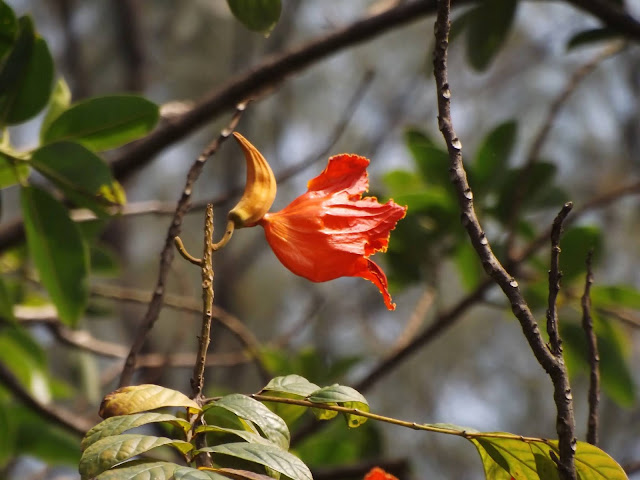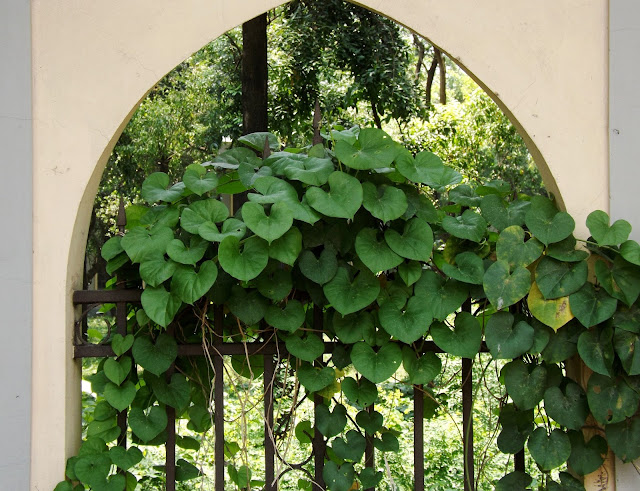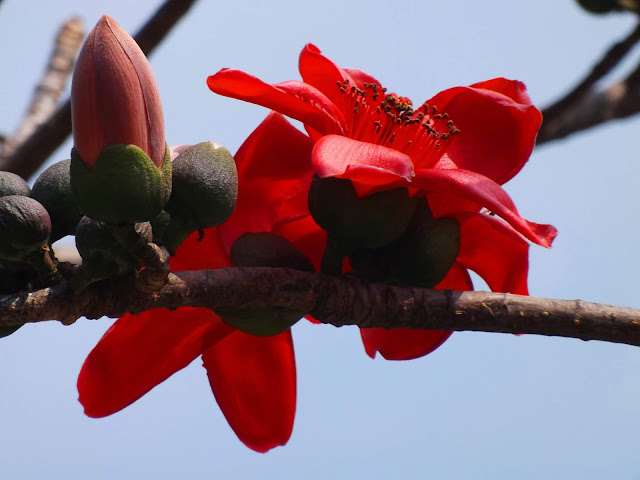Rudro polash or African tulip, Spathodea campanulata
Rudro polash or African tulip (Spathodea campanulata, family: Bignoniaceae) is a large or medium-sized tree with upright branches and bushy canopy, attaining a height of 20-30 m. The ornamental tree is introduced in Bangladesh and is very popular to passionate gardeners and naturalists. It is found in parks, botanical gardens and beside roads in the country. The tree is originated in tropical Africa.
Other names: Tulip gach (Bang), Scarlet bell tree (Eng).
Leaves are compound, imparipinnate (having single leaflet at the top) 9-19 in a pinnae, leaflets ovate-oblong, short-petioled, 10-16 cm long, opposite, edge uneven, tip pointed. Although many leaves of the semi-deciduous tree fall in winter, it does not become completely bald. New leaves come in spring, with lots of vibrant and spectacular flowers.
It produces orange or reddish flowers at the top of the terminal branches. Flowers are big, wide, campanulate, spathaceous, 18-20 cm long, beaked, usually upright, bisexual. Penduncle tomentose, sepals 5, petals 5, stamens 4. Flowering occurs in the spring (Feb-Apr).
Fruits are long, up to 20 cm, erect capsules. Seeds are thin and winged. Propagation of the plant is caused by seeds, root suckers and cuttings.
Flowers usually do not stay in the tree for more than 3 days. Needless to say, the glory of its flowers spread all over the world, but the smell is quite unpleasant!







Comments
Post a Comment